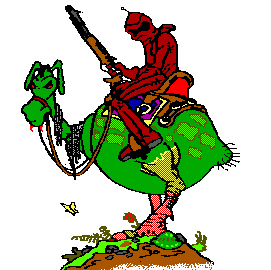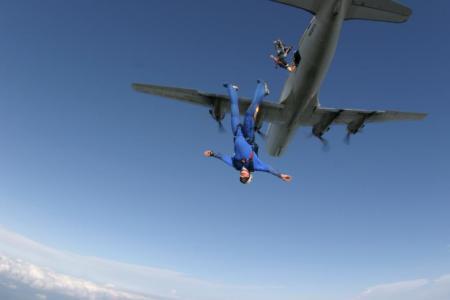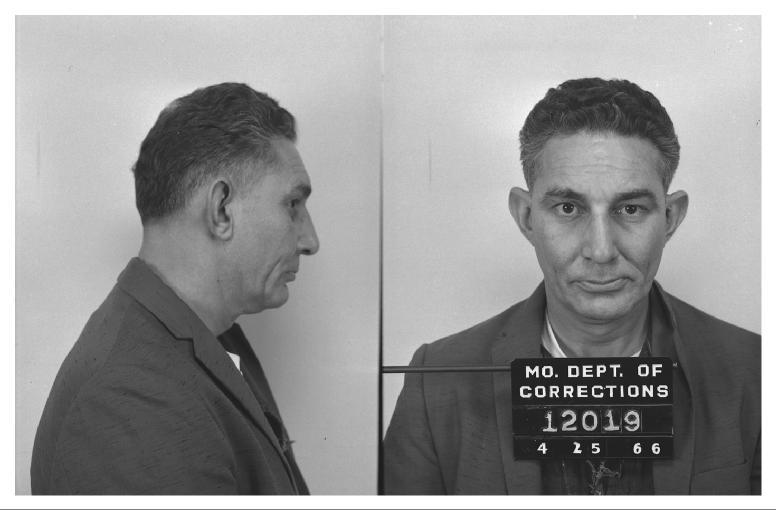snowmman 3
here:
http://books.google.com/books?id=JYT5UO_VHHcC&pg=PA346&lpg=PA346&dq=%22db+cooper%22+sog&source=bl&ots=3UyIbKtnWK&sig=WSvtOtDkcHiUfWIcy32VQoR2iSE&hl=en&ei=wpJrSufiM4L0sgPxjo2WBQ&sa=X&oi=book_result&ct=result&resnum=3
Snowmman said:
Sluggo. You should never assume you're ahead of the pack. Always assume you're playing catchup. It's a better way to control the risk of being wrong.
snowmman,
Your advice (and Billy Graham’s sermons) have done me a world of good.
![]()
![]()
![]()
![]()
![]()
![]()
![]()
"Diversity raises the intelligence of groups."
Nancy Kline
Web Page
Blog
NORJAK Forum
377 22
Quotesnowmman,
Your advice (and Billy Graham’s sermons) have done me a world of good.
Can you give us a comparative rating Sluggo? If you could only have one guiding light would it be Snowmman or Billy Graham?
377
snowmman 3
Quote
Your advice (and Billy Graham’s sermons) have done me a world of good.
Yeah.
Remember I'm just grooming you for access to my nuke.
If there are side benefits, well, all the better.
Friends with benefits.
When people sit in the pews and listen to someone and nod their heads, it's a sermon.
When someone rants in the parking lot in front of Starbucks, it's just a lunatic.
But pretty much the same thing.
snowmman 3
Daniel Boone operation into Cambodia
At Stevens' urging, the major finally had four American Huey gunships strafe the woodline around the slash-and-burn, and when they didn't draw ground fire the cocksure officer was convinced Stevens was running scared. With disgust in his voice, the major radioed, "OK, send in a helicopter and we'll call it a day."
Because the slope was so steep, the Kingbee that went in carried an American to help lift the recon men aboard, a tall, lanky, master sergeant, Ben Snowden. Friendly, quiet and a good soldier, Snowden was an old Vietnam hand and well respected, and it was his welcome hand that reached from the hovering Kingbee above Stevens.
Just as Stevens lifted up his Nung point man to Snowden, "there let loose such a volume of fire as I've never heard since," the One-Zero said. While the men on the LZ jumped for cover, the chopper rocked groggily back and forth but somehow lifted away. The Kingbee made it back to SOG's Dak To launch site where, riddled with sixty-eight bullet holes, its engine out, it slammed into a ditch.
From his cover, Stevens raised his head, looked uphill and for the first time could discern a gully and a cave. Protruding from the cave was the NVA machine gun that had hit Snowden's Kingbee. It had ceased firing as soon as the helicopter left.
Now Stevens realized they were after the helicopters. "They didn't want us. They could have got us on square one.. They could've shot me sitting in the door coming in."
Fortunately, Stevens and his men were not actually in Cambodia but 100 yards into Laos. Covey brought in a pair of A-1s that dropped bombs and strafed danger-close, forcing the enemy back.
A Kingbee made a few low passes and didn't take fire, so it swung around and touched down, and the whole recon team rushed it and jumped aboard. It was about 30 feet in the air when that NVA machine gun reappeared at the cave mouth and its concentrated fire shot the tail rotor off, spinning the bird wildly around until it flipped and slammed on its side, its shattered rotors flailing the earth, kicking up a momentary dust storm.
Inside the crashed Kingbee, Stevens lay among a mass of rucksacks and squirming bodies; despite his daze he saw high-octane gas streaming everywhere and he knew any second it would torch up. He jumped up, grabbed the edge of the open doorway and pulled himself out, sitting above the H-34's side; he could make out three NVA and the machine gun that had brought the Kingbee down. Whether awestruck or compassionate, the Communist gunners stopped firing for a few seconds. That was all that Stevens needed. With adrenaline inspiration, he snatched up his Nungs and the Vietnamese door gunner and heaved then like rag dolls to safety. Meanwhile his One-One, Roland Nuqui, ran around, kicked in the cockpit Plexiglas and dragged the pilots out.
Amazingly, not one of the nine men was dead, and only the Vietnamese door gunner's wounds were serious. As they low-crawled into the jungle the machine gun resumed firing, but by then Stevens had arrayed everyone securely in a small perimeter. But they had to be extracted soon or they were doomed. Only one flyable Kingbee remained and it had to leave to refuel. To make matters worse Covey, too, went to refuel. The only air support left was an unarmed Bird Dog carrying recon man Joe Woods. The Bird Dog made simulated gun runs to keep the enemy occupied.
But it was a propeller-driven A-1 Skyraider from the Pleiku-based "Spads" that saved the day. While the Kingbee and Covey refueled, Stevens carefully describe to the A-1 pilot the exact heading to the cave containing the deadly machine gun. Then the A-1 rolled in, banked almost vertically to release a shiny canister that spun end over end just above the team, smashed through limbs and leaves, bounced once then spewed 50 yards of jellied gasoline into the small cave mouth, and PHOOOMPFFFFF!--' the napalm flashed brackish orange. Scratch one machine gun.
Looking up at that sharpshooting Skyraider, Stevens saw what looked like dust flicking off its skin and realized other enemy machine guns were stitching it with slugs. A second later the plane belched smoke. Stevens watched the A-1 nose up, saw the canopy fall away and the pilot deject. Stevens clenched his Swedish K so hard it shook in his hands. But wishing and hoping were no help; the parachute drifted into the NVA positions.
The A-1 pilot was lost. Whether he died in captivity or was killed immediately, Stevens never learned.
Momentarily helicopters appeared gunships, and the remaining Kingbee. flown by the Vietnamese pilot who'd taken sixty-eight hits and crash-landed the other bird at Dak To. He had insisted on flying because he knew the LZ.
With the deep shadows of sunset falling across the hillside and this one final H-34 available, everyone understood there'd be just one chance; the gunships let loose almost their entire loads in a couple of withering low-level passes. Then came the Kingbee. It seemed anticlimatic after six hours of shooting and bombing and strafing, but they got out with only minimum ground fire.
At Dak To, Stevens and Nuqui and the Nungs climbed from the Kingbee, exhausted and sweating but euphoric because their team had come through without losing a single man. Stevens lifted a silent toast to the unknown A-1 pilot. Then Lowell Stevens saw a body bag and learned Ben Snowden was dead, riddled by nine of those sixty-eight bullets that hit the first Kingbee. He'd probably died even while he hovered 6 feet over Stevens on the LZ.
In honor of the lanky master sergeant, about a hundred SOG men gathered that night and sang "Hey, Blue." In memory of this first man lost in Daniel Boone, they named the new recon company office at Kontum, Snowden Hall.
QuoteAnd I believe this is the last thing the FBI wants to hear.
Georger you said a mouthful and that statement reflects what is going on inside of my head right now. Pure Chaos and Fear and Anger...not at you or anyone on this forum unless there is a mole who planted "information" I have recently been made aware of.
If the information is true - it is sick - and this country I have pledge my allegiance to is worse than sick.
This thread and some of the posters are shields or have been used as shields - shields to hide the dirty truth...and as one of you stated not long ago. Case Closed.
377 said:
QuoteCan you give us a comparative rating Sluggo? If you could only have one guiding light would it be Snowmman or Billy Graham?
Oh… Dr. Graham of course, not that snowmman hasn’t been helpful, it’s just that I grew up (in North Georgia) a Southern Baptist. One of the basic tenets of the Southern Baptist religion is that Billy Graham is God and when you die, you go to Montreat, NC.
I can remember listening to the radio at around age 4-years (1952) and hearing Dr. Graham’s standard: “You MUST put yo-ur hey-ands on the rad-e-yo and pray for God’s for-gev-ness.”
This nightly statement (admonition) had several major impacts on my developing psyche.
One: It scared the hell out of me.
Two: It made me think all evangelist were “just a little freaky.”
Three: It made me abandon my given first name (Billy) in favor of my middle name, because I figured if I stuck with Billy everyone would think I was a preacher (or country music singer).
And finally: It made me think that God resided in the radio, which surely influenced my initial career choice and decision to major in Electronic Engineering because I knew I’d never get through school without God’s help.
Yeah… I’m gonna go with the preacher over the troll-er.
snowmman said:
QuoteWhen people sit in the pews and listen to someone and nod their heads, it's a sermon.
When someone rants in the parking lot in front of Starbucks, it's just a lunatic.
That’s not true where I come from. Where I come from:
When someone stands on a fire-plug, a mail collection box, or an inverted trash can ranting and thumping on a (King James version) Bible, it’s a sermon.
When someone rants in the parking lot in front of Starbucks, he is in Mountain View or Atlanta. (Therefore: by definition a lunatic.)
Another
Web Page
Blog
NORJAK Forum
snowmman 3
It's called Hotlanta.
QuoteSluggo said "I have reason to believe the FBI knew about the SF-SOG activities in Viet Nam by as early as 1972. "
Sluggo. You should never assume you're ahead of the pack. Always assume you're playing catchup. It's a better way to control the risk of being wrong.
So the next questions to ask:
1) Was Waugh investigated?
2) If so, did someone actively decide to stop looking in that direction?
3) SOG info was destroyed. Were the HALO jumps first described in public in 1995?
4) When were the first photos of Waugh from 1971 made available?
5) Has Waugh's fingerprints and DNA ever been compared to what the FBI has?
6) If Waugh is not worth investigating today, what kind of suspect would the FBI investigate?
7) If the answer is "The FBI won't investigate anyone", then why spend the time on making FBI movies ..e.g. the one with Tom Kaye which is up on the FBI channel on youtube, etc..and all the press releases on the FBI page? Are they expecting Cooper to just show up and say "It's me, here's the proof?" Is that even a remote possibility?
And the most important question
8) What can we do to make sure Cousin Brucie can write some good articles, maybe a book, minimally stay employed and keep the electricity on?
Now you're talking Snow.
snowmman 3
http://ngccommunity.nationalgeographic.com/ngcblogs/inside-ngc/
"Currently the FBI has the help of a team of scientists who are going through the evidence in detail- recalculating the drop zone, analyzing the money. They are finding that the drop zone may have very well been directly over the Columbia River, D. B. Cooper disappeared, yes, he may have been washed out to sea."
I also note they have some stills from the documentary.
Apparently Cooper landed with sunglasses intact. See photos attached. (was the tie also on for the landing??) or click thru the photos at:
http://channel.nationalgeographic.com/episode/the-skyjacker-that-got-away-4375/Overview#tab-Photos/4
The budget for the documentary was estimated to be $280,000
from
http://www.imdb.com/title/tt1466352/business
Orange1 0
QuoteThis thread and some of the posters are shields
Interesting, Jo, seeing as YOU started the DB Cooper discussion threads here.
Take the tinfoil off please.
Orange1 0
In Prison Break there was a character called Westmoreland.
In the storyline, he was actually DB Cooper.
I'm just sayin' ....





What "main interviewing"?
They who?
Or are you just making this up?
Okay, how would you paraphrase what sluggo said?
You're aware of when the FBI first started saying they changed their opinion of whether Cooper was an expert, right?
I figured those two years bounded the SOG investigation, if there was more than one interview.
What do you think?
(edit) They who? it would be FBI right? who else would it be?